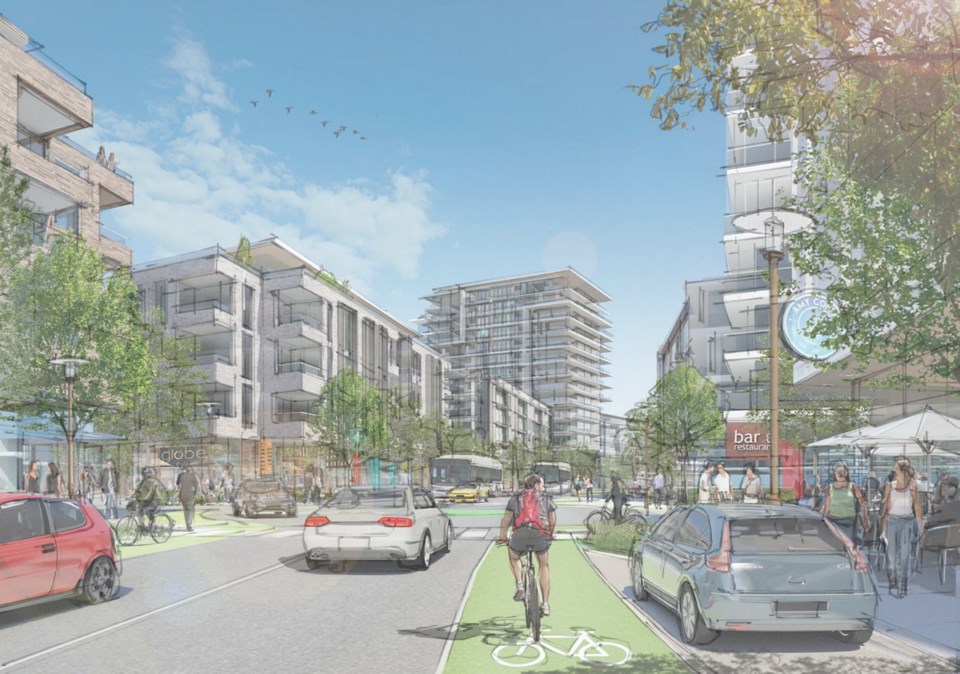The Vancouver company that owns the 726-acre Sandstone site at the south end of Nanaimo hopes for a public hearing this fall to present a revised vision.
“It is basically going to be a game-changer for south Nanaimo,” Ian Porter, Seacliff Properties’ director of development, said Wednesday.
Seacliff intends to build Sandstone over 20 years. Investment “will easily be in the billions,” Porter said.
“It’s going to create employment opportunities on the south side of Nanaimo that are not there not there now. It is going to create shopping opportunities.
Sandstone is at the junction of the Trans-Canada and Duke Point highways.
When Seacliff bought the land in 2018, it came with a previous blueprint for a planned community.
The new version includes a business park expected to generate 5,500 permanent jobs once the project is complete.
Seacliff’s other Vancouver Island properties include Royal Beach land in Colwood, where it plans a mixed-use development, and the Fairwinds golf and residential community at Nanoose Bay.
“We fully believe that Vancouver Island is going to continue to grow,” Porter said. “More people are going to live there. More people are going to want to do business there.”
Nanaimo city hall is reviewing Seacliff’s application for its updated plan and zoning amendments. “Staff are targeting the autumn for council introduction of the amendment bylaws,” said city planner Brian Zurek.
Sandstone would be developed in four precincts: a business park-employment zone, an urban town centre and expansion of two existing neighbourhoods, Chase River and Cinnabar.
If approved this fall, work could start on some residential and the business park in 2021, Porter said.
Seacliff estimates that construction would create more than 1,200 jobs per year.
Property taxes would total $17.67 million annually once the project is completed, with development cost charges adding up to $51.9 million for the project’s lifetime total, Seacliff’s submission states.
Sandstone could eventually have up to 3,200 homes in a range of single-family, duplexes, townhouses and apartment style homes. Some would be rental. Smaller lots and suites would contribute to affordability, the submission said. The developer is proposing a formula to contribute to the city’s affordable housing fund.
The town centre would have 2,000 residential units, some in towers, which could be up to 20 storeys. The town centre would include 550,000 square feet of commercial, offices and service uses.
In the Cinnabar neighbourhood, plans call for up to 600 detached homes and attached/townhouses, with space for a future elementary school.
The Chase River (Cedar Road) area would allow for up to 600 lower-density homes, and for a 100-acre reserve of riverfront land.
About half the lands in the Chase Valley and Cinnabar neighbourhoods would be allocated for parks, open space, and trails.
In the business-employment area, a maximum six million square feet could be constructed.
Mike Parker, Chase River Community Association chairperson said, “Generally I think there is a lot of support for the project from residents and from the association as a whole. It has been an ongoing process with numerous players saying they are going to develop that section of land over 30 years.
“It finally looks like somebody is going to come through and actually start developing it.”
The population is booming in the south end of Nanaimo and residents are eager for more services, Parker said. “We need more retail … we need jobs, we need affordable housing, we need rental units — all that stuff.”
Sandstone has taken into account much of what residents are seeking, Parker said. He is pleased with the proposed amount of green space.
A major existing concern for area residents is heavy traffic, especially along Extension Road and additional development could add to that, he said.
Nanaimo Mayor Leonard Krog said the project offers an opportunity for the community to get together, in conjunction with B.C. Transportation Ministry, to work out long-term solutions around traffic and active transportation.
Krog welcomed the business area portion of the project, saying “Nanaimo is very short on industrial land of any kind.”
Sandstone could bring major changes to the city’s southern area, he said. “It is also has potential to provide amenities that we might not otherwise see there for a number of years.”
Not all development proposals come to fruition, Krog noted, but in this case, “a substantial developer with deep pockets is working with the community to try and create a development that will hopefully have strong community support, particularly that part of town.”



